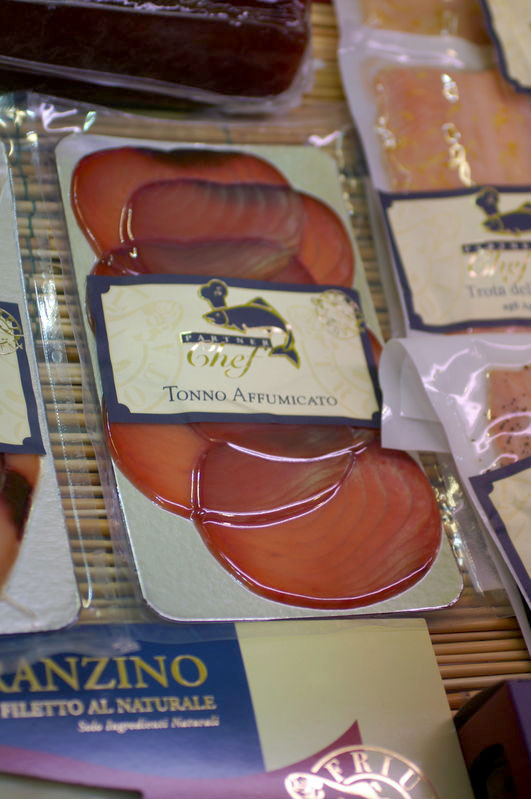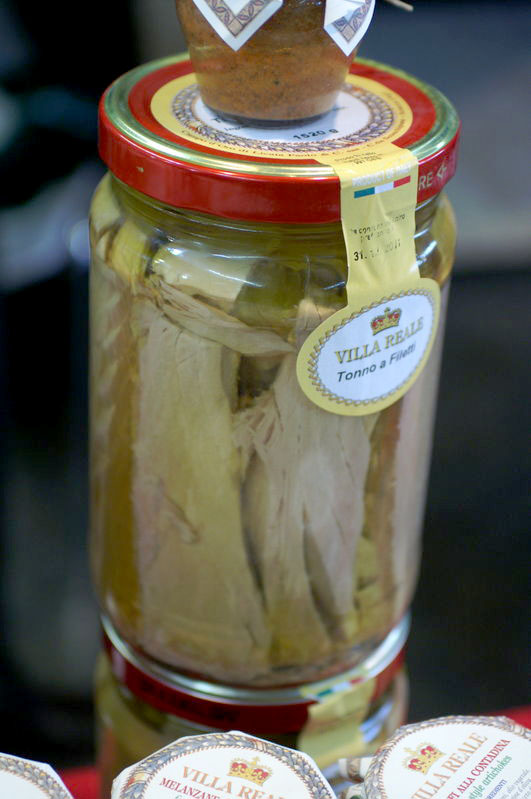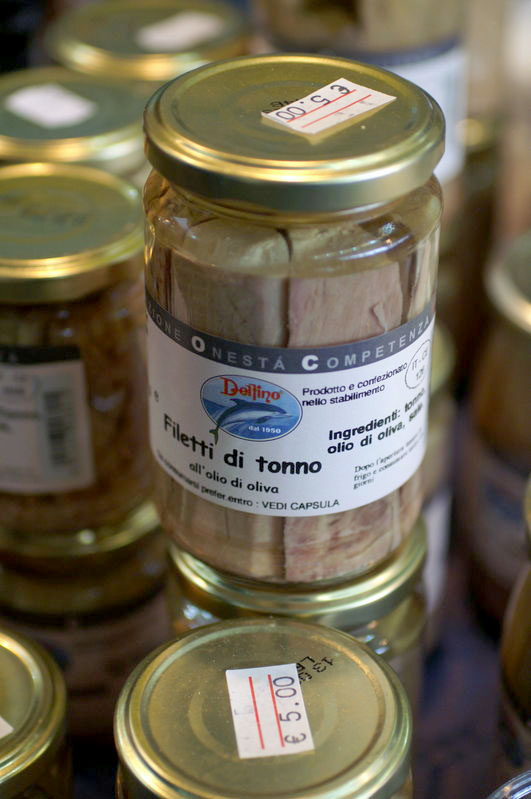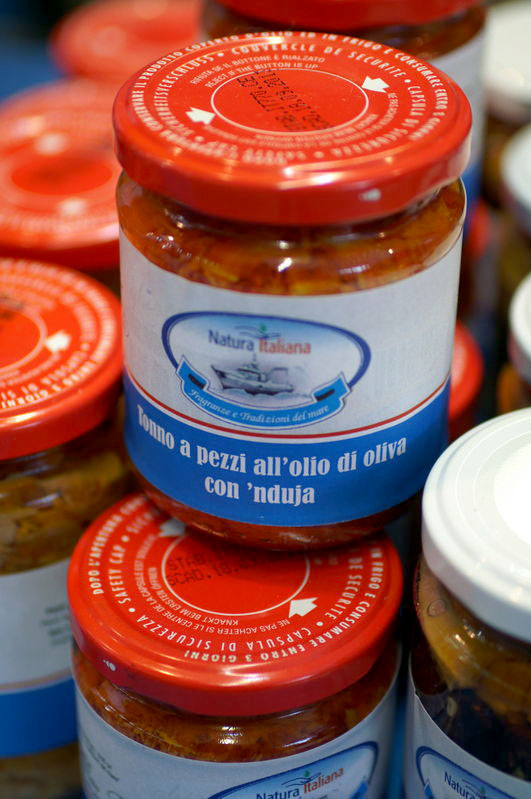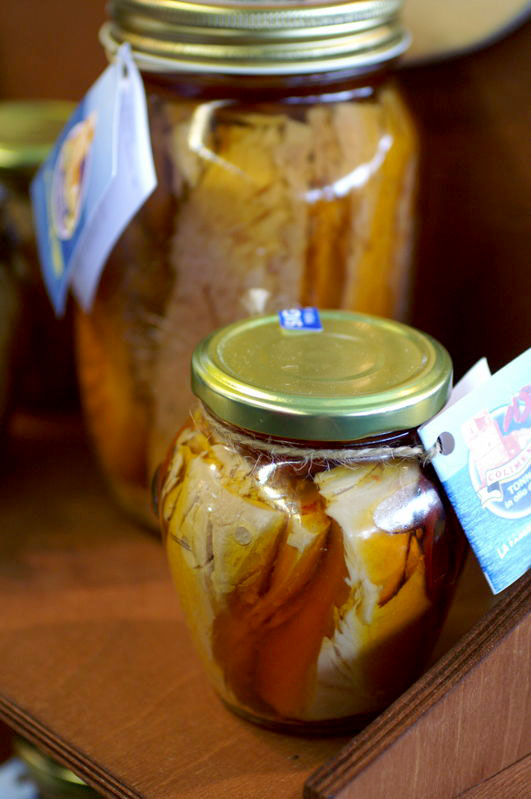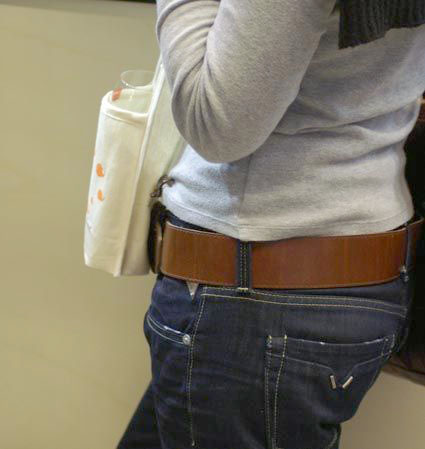Genoa is a place that, until now, I had always driven through without stopping: with so many charming towns to choose from along the Italian Riviera, somehow it seemed too big and daunting.
This weekend I finally had a reason to explore this city that bears so many resemblances to Nice, both in history and cuisine. Slow Fish, a biannual exhibition organized by the Slow Food movement, is taking place here until Sunday and I didn’t want to miss the opportunity to learn more about the fish from “my” sea.
With so many fish under threat Slow Fish has an important educational role to play, but this fair is also about pleasure – a fact that the thousands of Italians who crammed into the Genoa Fiera Pavilion B building designed by Jean Nouvel on the harbour didn’t fail to grasp. For the first hour, it was pretty much impossible to get anywhere near any of the stands, since I had made the mistake of arriving at lunchtime. Anywhere there was food to be had, there was also a disorderly crowd of hungry Italians.
Even at my most ravenous I can’t compete with that, so I quickly admitted defeat. Ignoring the delicious smells of fritto misto, shellfish cooked in wine, and pasta with Sicilian seafood sauce, I headed downstairs for cheese-filled foccacia, which was much less in demand. With my stomach thus lined, I was able to fight my way more effectively through the crowds.
One thing that surprised me was the amount of tuna on display. An important part of Slow Food’s role has always been to protect endangered foods, and Slow Fish has published a great little pocket-sized guide – available in PDF form at this link – on how shop for sustainable fish. On its website, Slow Fish said that it had asked exhibitors not to sell endangered species such as tuna, salmon, eel or swordfish at this year’s show – something that many chose to blithely ignore (including perhaps the organisers themselves).
Everywhere I turned, it seemed, there was tuna – which was perhaps inevitable given that it’s so much part of the local culture. Let’s hope that some of it at least was sustainable.
Fortunately, there were also anchovies aplenty, fresh Mediterranean rockfish, unusual shellfish such as tellines, seafood in various guises, and vintage sardines, the rising star of the fish world. Sprinkled among these were stands selling olive oil, spices (I picked up some Moroccan saffron for a reasonable price) and every imaginable kind of seasoned salt – I fell for a multicoloured salt-and-flower blend from Ibiza, only to be told that it wasn’t for sale.
The workshops are always worth attending at Slow Food events and I was able to see a cooking demonstration by chef Moreno Cedroni, chef at the two-Michelin-starred Madonnina del Pescatore in Italy’s Marche region. He had been billed as a modern cook and it was a pleasant surprise to hear him speak of his childhood memories as he prepared pared-down dishes such as fish broth laced with egg poured over raw fish. Admirably, he works only with little-known fish: “this fish cost €3.50 a kilo,” he said proudly as he prepared one dish. I loved his interpretation of arrabbiata sauce – “the only sauce in which I let the garlic brown,” he said – served atop steamed eggplant laced with salted fresh anchovy and highlighted by two sauces, vivid puréed parsley and garlic poached in milk before being blended into an almost mayonnaise-like sauce.
“You can always recognize the cooking of an Italian chef,” he observed. “When you eat the cooking of a British chef, you could be anywhere in the world.”
Maybe the best thing I spotted at Slow Fish, though, was this wine pouch: like a baby carrier, but for keeping a glass of wine close to your body while eating or gesticulating with your hands. How have we ever lived without it?

